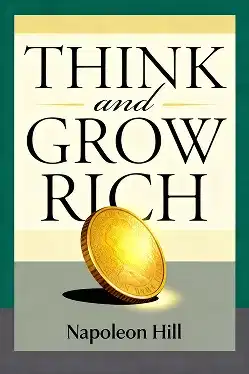What is
The Science of Getting Rich about?
The Science of Getting Rich by Wallace D. Wattles is a 1910 self-help classic that presents wealth creation as an exact science rooted in metaphysical principles. It argues that anyone can achieve financial abundance by aligning their thoughts and actions with universal laws, emphasizing gratitude, creative visualization, and a "certain way" of thinking and acting to attract prosperity.
Who should read
The Science of Getting Rich?
This book is ideal for entrepreneurs, personal development enthusiasts, and anyone seeking a mindset shift toward abundance. It resonates with readers interested in New Thought philosophy, the Law of Attraction, or practical steps to overcome scarcity thinking and build wealth through purposeful action.
Is
The Science of Getting Rich worth reading?
Yes, it remains a foundational text in self-help literature, inspiring modern works like The Secret. Its timeless advice on mindset, actionable steps for wealth creation, and focus on ethical prosperity make it valuable for readers open to metaphysical approaches to success.
What are the main principles in
The Science of Getting Rich?
Key principles include:
- Creative over competitive thinking: Focus on creating value, not competing for resources.
- The "Certain Way": Combine faith in abundance with specific mental and physical actions.
- Gratitude: Cultivate thankfulness to align with prosperity.
- Law of Attraction: Thoughts shape reality, making wealth a deliberate mental construct.
How does
The Science of Getting Rich define true wealth?
Wattles defines true wealth as holistic success—having financial abundance, health, and the ability to live purposefully. Money is framed as a tool to expand one’s impact, not an end goal, emphasizing ethical wealth-building that benefits others.
What is the "Certain Way" of acting in the book?
The "Certain Way" involves taking purposeful, efficient action guided by a clear vision of success. It requires avoiding rushed or unfocused efforts, instead aligning every step with gratitude, faith, and the intent to create value for others.
How does
The Science of Getting Rich relate to the Law of Attraction?
The book posits that focused thoughts and beliefs magnetize opportunities, a concept later popularized as the Law of Attraction. Wattles stresses maintaining a mental image of desired wealth and eliminating doubt to manifest goals.
What are criticisms of
The Science of Getting Rich?
Critics note its lack of empirical evidence and oversimplification of systemic barriers to wealth. Some find its metaphysical focus impractical, while others argue it underestimates the role of privilege or economic structures.
How does
The Science of Getting Rich advise overcoming competition?
Wattles urges readers to abandon competitive scarcity mindsets. Instead, he advocates creating new value through innovation, collaboration, and service—viewing abundance as infinite and accessible to all.
Why is
The Science of Getting Rich still relevant in 2025?
Its emphasis on mindset, adaptability, and ethical wealth aligns with modern themes like conscious capitalism and digital entrepreneurship. The rise of remote work and AI-driven economies reinforces its focus on creativity over traditional competition.
How does
The Science of Getting Rich compare to
The Secret?
The Secret expands on Wattles’ Law of Attraction concepts but lacks his structured action steps. Both emphasize mindset, but Wattles’ work provides a clearer roadmap for merging thought with deliberate, value-driven action.
What iconic quotes appear in
The Science of Getting Rich?
Notable quotes include:
- “There is a thinking stuff from which all things are made.”
- “You must form a clear and definite mental image of what you want.”
These underscore the book’s core message: clarity, faith, and focused thought precede tangible results.














